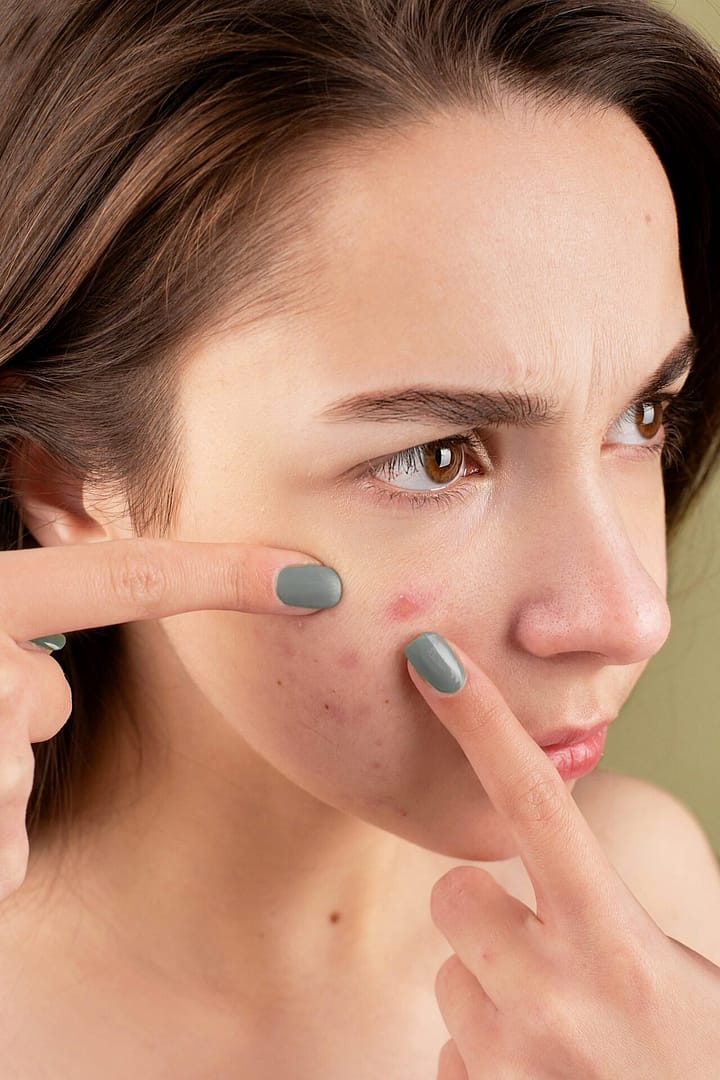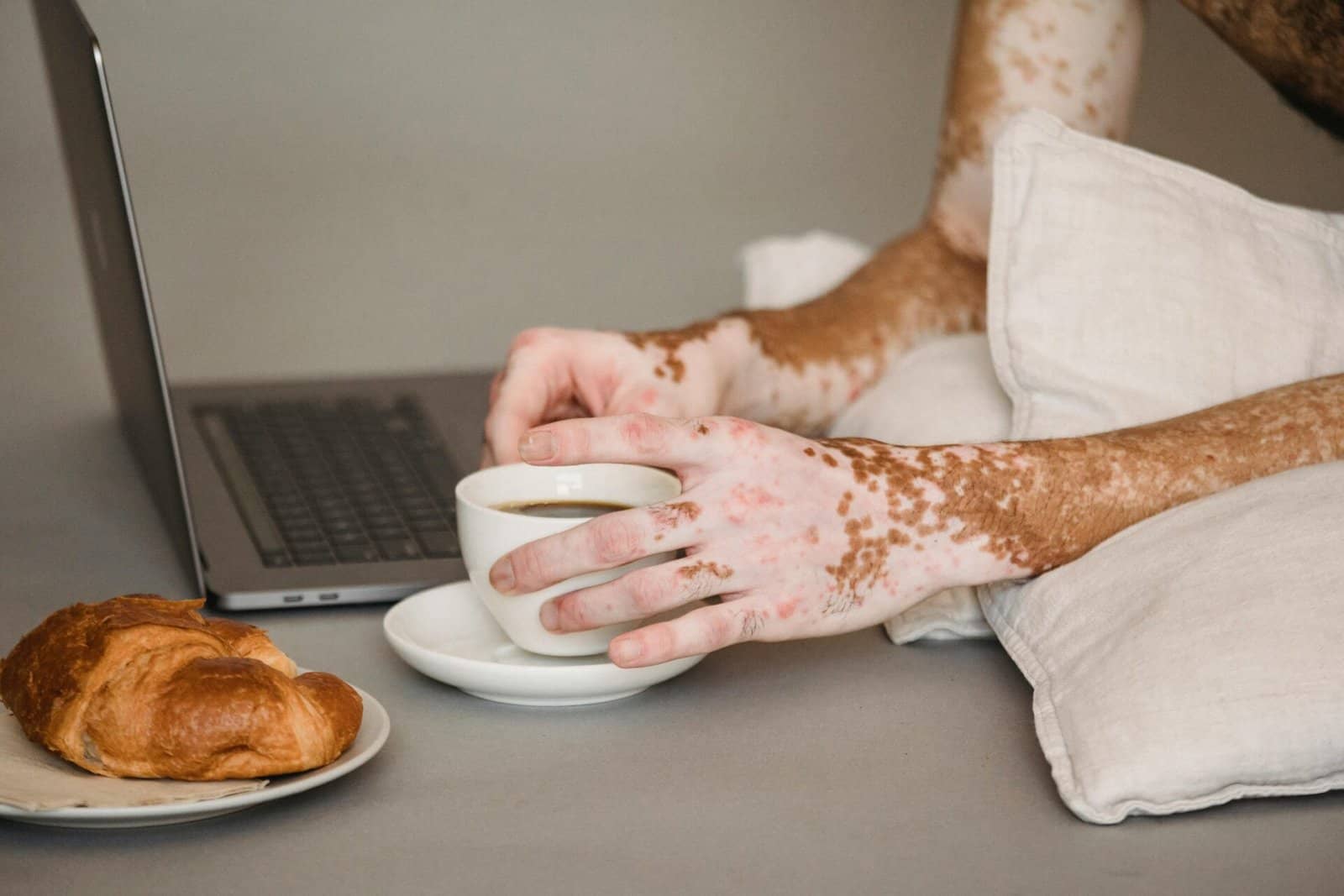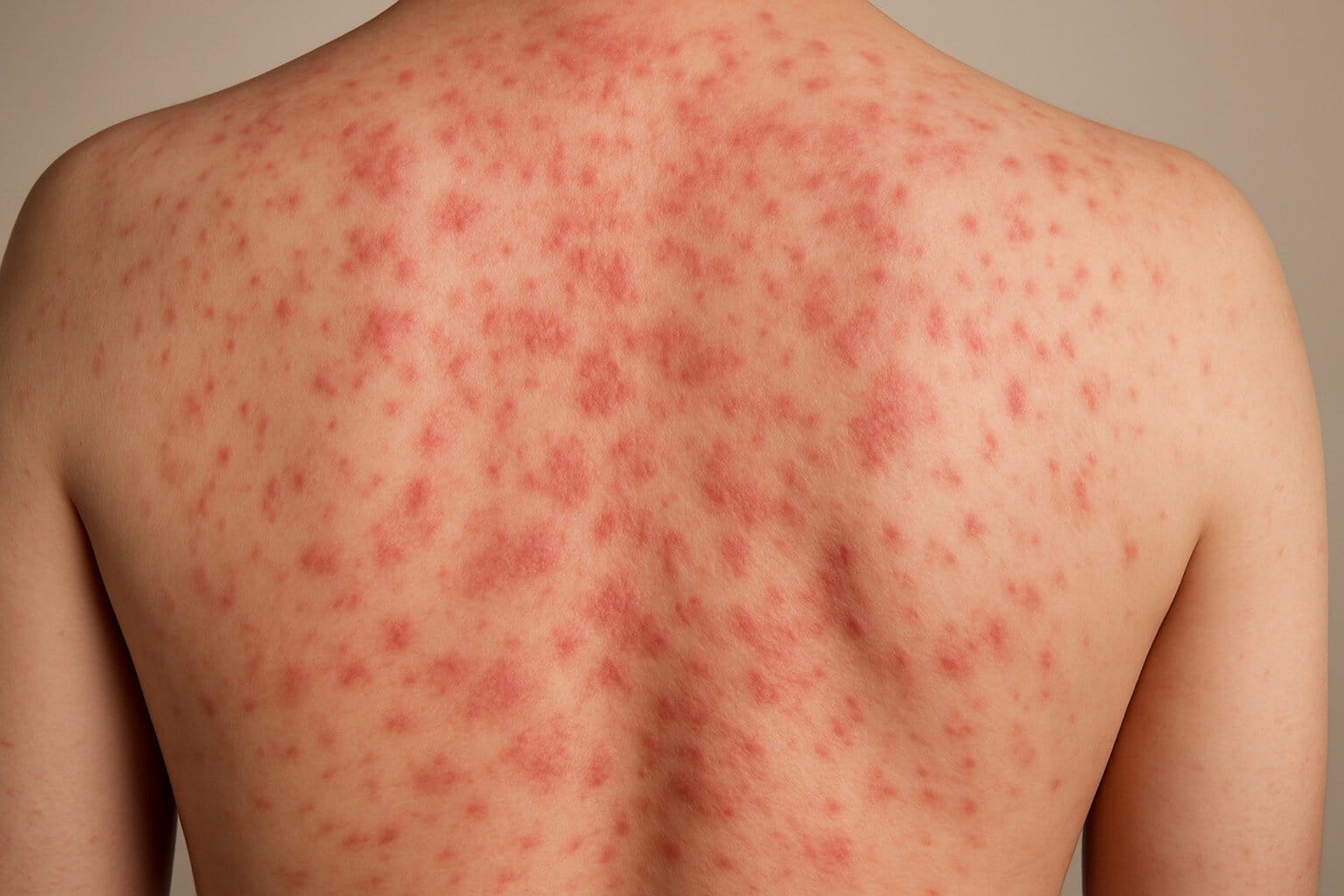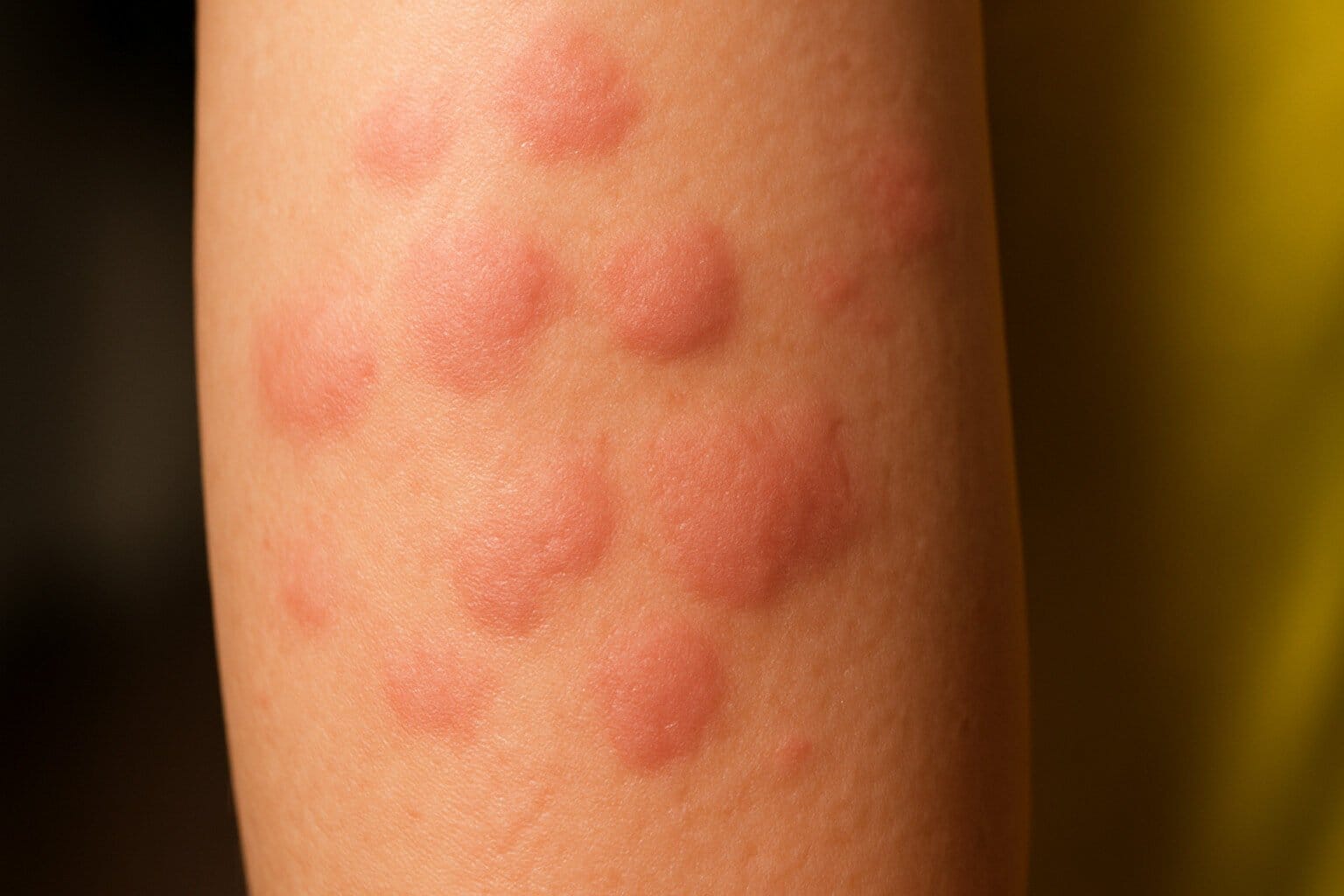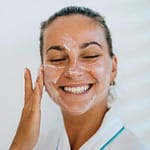What Are Papules? Early Signs & Risks
Papules are small, red bumps that appear on your skin. For example, they can show up before a school event, like a dance or picture day. These acne bumps feel sore and look annoying. Moreover, they make your skin seem uneven. Papules aren’t dangerous, but they can make you feel shy about your looks. However, the good news is you don’t need fancy creams or a doctor. You can fight papules at home with simple tricks. This article explains what papules are and why they happen. Additionally, it covers how they form, different types, and myths to skip. You’ll also find easy ways to treat and prevent them. Furthermore, we include tips and answer questions to help you get clear skin. Therefore, this guide will make you feel confident and ready for anything.
What Are Papules?
Papules are tiny, raised bumps, usually red or pink. Unlike other pimples, they don’t have a white or black top. For instance, they appear on your face, back, or chest. They feel tender when you touch them. Papules are acne from irritated skin. Moreover, anyone can get them, not just kids. Things like face wash or stress can cause them. For example, they often pop up in oily areas, like your forehead or nose. However, they can show up anywhere. By learning what causes papules, you can stop them. Therefore, this guide gives you tools to beat papules, whether you have one bump or many.
Why Do They Happen?
Papules form when pores, tiny holes in your skin, get clogged and irritated. Your skin makes oil, called sebum, to stay soft. However, sometimes it makes too much oil. For example, this happens during puberty, stress, or periods for girls. The oil mixes with dead skin cells that don’t fall off. As a result, this clogs the pore. Then, bacteria in the pore cause swelling, making a red, sore bump. Unlike blackheads, which are open, or whiteheads, which are closed, papules are inflamed.
Additionally, hormones make your skin oilier, especially when you’re a teen or stressed. If your family has acne, you might get papules too. For instance, thick makeup or not washing your face adds oil and dirt. Some medicines, like for colds, make more oil. Moreover, dairy, like milk, or sugary snacks, like candy, might cause papules for some kids. Sweating after sports or tight clothes traps dirt. Therefore, knowing these causes helps you stop papules.
How Do They Form?
Papules form like a clog in your skin’s system. Your skin has tiny holes, called pores. These let out oil and sweat to keep skin healthy. However, sometimes oil glands make too much oil. For example, this happens because of hormones, stress, or hot weather. The oil mixes with dead skin cells that stick around. As a result, the mix clogs the pore. Then, bacteria in the pore cause swelling and redness. This makes a sore papule. Unlike other pimples, papules don’t have a white or black top.
Furthermore, germs on your skin make swelling worse. The bump turns red and tender. For instance, touching your face with dirty hands adds gunk. Using oily lotions or a dirty pillow does too. Additionally, sweat after gym class can clog pores. This process, oil, skin cells, bacteria, and swelling, makes papules. Therefore, knowing this helps you clean pores and stop papules.
Types
Papules are acne, but other bumps look similar. Here are the main types:
- Papules: Small, red, sore bumps with no top. They form when clogged pores get inflamed. For example, they show up on your face, back, or chest.
- Pustules: Like papules but with a white or yellow pus-filled top. They’re more swollen and hurt more. For instance, they appear during bad acne breakouts.
- Nodules: Bigger, deeper, harder bumps under the skin. They’re more serious and very sore. Moreover, they often need a doctor’s help.
Each type needs different care. Papules can be fixed at home. However, pustules need extra care for swelling. Nodules might need a doctor. Therefore, knowing your bump helps you treat it right.
Myths
Wrong ideas about papules can confuse you. Therefore, let’s fix some myths:
- Myth 1: Papules come from dirty skin. Nope! Oil, skin cells, and germs cause them. However, not washing your face can make them worse.
- Myth 2: Popping papules helps them go away. Wrong! Popping pushes germs deeper. As a result, this causes scars or more bumps.
- Myth 3: Only teens get papules. Not true! Teens get them a lot, but adults can too. For example, stress or oily skin causes them.
- Myth 4: Toothpaste fixes papules. No way! Toothpaste irritates skin and makes papules worse. Instead, use stuff made for your face.
- Myth 5: Food doesn’t cause papules. Actually, dairy or sugary snacks can make skin oilier for some kids. This leads to papules.
Thus, fixing these myths helps you use real ways to stop papules.
Solutions
You can treat papules at home with simple tricks. These calm your skin and clean pores. Here are some ideas:
- Gentle Washing: Wash your face twice daily, morning and night. Use a gentle, oil-free soap labeled “non-comedogenic.” For example, it won’t clog pores. This cleans oil and dirt without hurting skin.
- Spot Treatments: Use a cream with benzoyl peroxide or salicylic acid. Dab a tiny bit on papules once or twice daily. These fight germs and unclog pores. However, don’t use too much, it can dry your skin.
- Natural Fixes: Try these home remedies:
- Tea Tree Oil: Mix 2-3 drops with a tablespoon of water. Dab on papules with a cotton ball. It fights germs and calms redness. Always mix with water to avoid irritation.
- Aloe Vera Gel: Put fresh aloe vera on papules before bed. It reduces redness and helps skin heal.
- Green Tea Rinse: Brew green tea and let it cool. Dab it on with a cotton pad. It calms swelling.
Do these regularly. For instance, you might see papules improve in a week or two.
Preventions
Stopping papules keeps your pores clean and skin calm. Here are tips to try:
- Light Moisturizer: Use a light, non-comedogenic moisturizer. Even oily skin needs it. This stops dryness, which can make more oil and papules.
- Avoid Triggers: Skip thick makeup or greasy lotions. They clog pores. For example, wash makeup brushes weekly. Change pillowcases often. Wash your face after sweating, like after sports.
- Sun Protection: Use non-oily SPF 30 sunscreen daily. Sun can hurt skin and clog pores. Choose zinc oxide sunscreen for sensitive skin.
- Eat Healthy: Drink lots of water. Eat fruits, veggies, and whole grains. For instance, try apples or oatmeal. Cut back on dairy or sugary snacks.
- Handle Stress: Stress makes skin oilier. Try relaxing stuff, like deep breathing or music. Sleep 8 hours to keep skin healthy.
Do these daily. If papules persist after a month, see a skin doctor.
Recommendation
To fight papules, start with a simple daily plan. First, wash your face every morning and night with gentle, oil-free soap. It should say “non-comedogenic” to avoid clogging pores. Then, dab a bit of benzoyl peroxide or salicylic acid cream on papules once or twice daily. This reduces swelling and clears pores. Additionally, try natural fixes, like tea tree oil mixed with water or aloe vera gel, 2-3 times weekly. They calm your skin. After washing, use a light, non-comedogenic moisturizer. Also, put on SPF 30 sunscreen during the day.
Next, write down what causes papules, like milk or sweaty clothes, in a notebook. Avoid those things. For example, wash pillowcases and makeup brushes often. Don’t touch your face with dirty hands. Moreover, eat healthy foods, like fruits and veggies. Drink lots of water. Cut back on candy or dairy. Furthermore, relax with fun stuff, like music or stretching. Stress makes papules worse. Sleep 8 hours nightly. Be patient, papules take a week or two to improve. However, if they don’t go away after a month or get worse, ask a parent to help you see a skin doctor.
FAQs
Q: Do papules go away on their own?
A: Some fade in a week or two. However, washing and treating skin helps them go faster and stops new ones.
Q: Can I pop papules?
A: No, popping pushes germs deeper. As a result, it causes scars or more bumps. Instead, use tea tree oil or aloe vera.
Q: Does food cause papules?
A: Yes, dairy or sugary snacks can make skin oilier for some kids. Therefore, try eating healthier.
Q: Are papules like whiteheads?
A: No, papules are red, sore bumps with no top. Whiteheads have a white top and less swelling.
Q: How long to clear papules at home?
A: With a good routine, results show in 1-2 weeks. However, tough papules take 4-6 weeks.
Q: Can sunscreen cause papules?
A: Greasy sunscreens might. Therefore, use non-oily SPF 30 labeled “non-comedogenic.”
Q: Can regular soap clean papules?
A: No, regular soap dries skin too much. It makes more oil. Instead, use gentle, non-comedogenic face soap.
Q: Are papules the same as nodules?
A: No, papules are small and on the surface. Nodules are deeper and need a doctor.
By learning why papules happen and using these easy fixes and tips, you can keep pores clean. Thus, you get smoother, healthier skin. Stick with your routine, avoid triggers, and be patient.
Subscribe to our newsletter!
